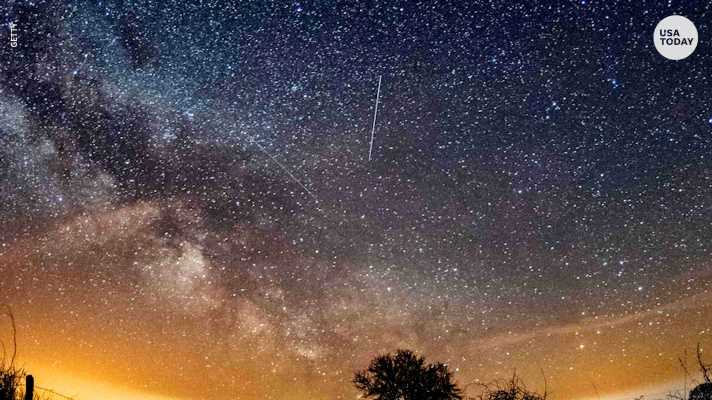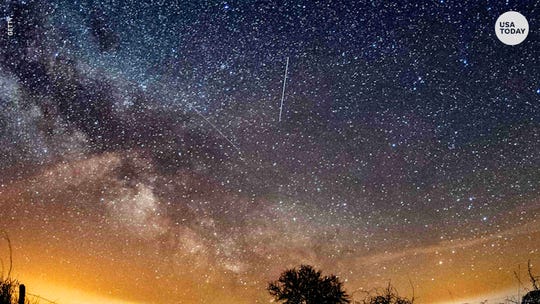Story Highlights
- The Lyrids have been observed for more than 2,700 years, making them one of the oldest known showers.
- The meteors appear to emanate from the constellation Lyra the Harp.
- The Lyrids are known for their fast and bright meteors, NASA said.
The first major meteor shower since January is coming to a sky near you over the next few nights – and the peak will be in the predawn hours Thursday, Earth Day.
“By April, after the months of meteor drought, many meteor-watchers are itching to get going,” EarthSky.org reports. “So – though they produce only 10 to 15 meteors per hour at their peak – the Lyrids are always welcome.”
A few shooting stars may be seen streaking across the sky early in the night, but like many meteor showers, the best time to watch the event will be during the second half of the night as the frequency of meteors slowly increases, AccuWeather said.
Also, the moon will be emitting bothersome light pollution until after it sets around 3:30 or 4 a.m. local time, after which the darker sky will make it easier to see the dimmer meteors.
Weather-wise much of the nation should be clear, which will make for excellent viewing of the Lyrids, according to AccuWeather.
The Lyrids have been observed for more than 2,700 years, NASA said, making them one of the oldest known showers. The first recorded sighting of a Lyrid meteor shower goes back to 687 B.C. in China. Observers there said the Lyrids were “falling like rain.”
Earth Day 2021: After a critical year for COVID and climate, Earth Day 2021 is Thursday
A Lyrid meteor streaks across the night sky. The annual Lyrid meteor shower peaks this year during the early morning hours of Thursday April 22. (Photo: GETTY)
Lyrids are pieces of debris from the Comet C/1861 G1 Thatcher. In mid-April of each year, the Earth runs into the stream of debris from the comet, causing the meteor shower.
The Lyrids begin as tiny specks of dust that hit Earth’s atmosphere at 109,600 mph, vaporizing from friction with the air and leaving behind the streaks of light we call meteors, Astronomy magazine reported.
The meteors appear to emanate from the constellation Lyra the Harp, near the bright star Vega, which rises in late evening and passes nearly overhead shortly before dawn, the magazine said.
The Lyrids are known for their fast and bright meteors, NASA said, though not as fast or as plentiful as the famous Perseids in August.
Lyrids frequently leave glowing dust trains behind them as they streak through the Earth’s atmosphere, according to NASA. These trains can be observable for several seconds.
The next major meteor shower will be the Eta Aquarids, which is set to peak in early May.
Source: Read Full Article

